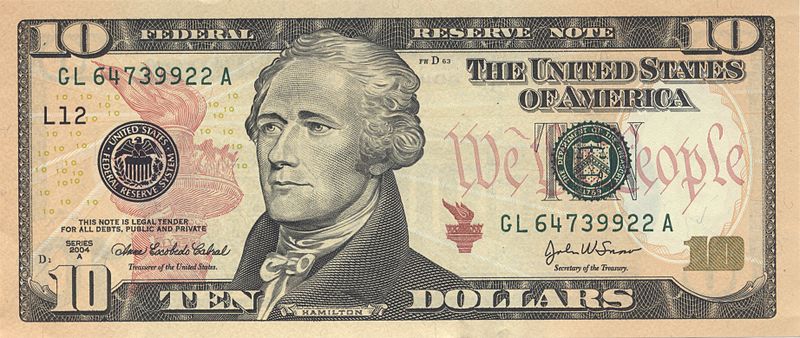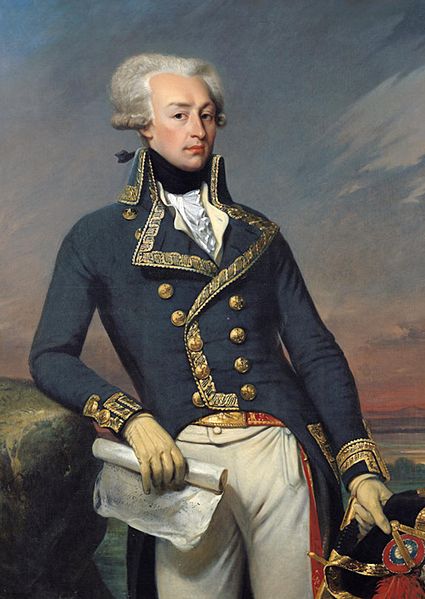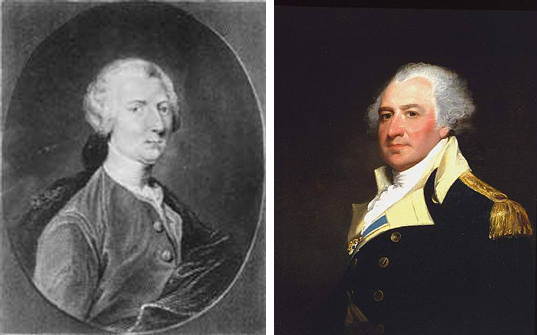Follow me:

Date posted: December 29th 2016
Book Title: Washington - A life (Part 2) (continued)
The Rising Stars
Ok, victory at last! But it was winter time, and the excitement was chilled rather quickly. The starvation and the lack of clothing kicked in. They described barefoot soldiers suffering from frostbite leaving blood traces on the snow as they marched. There was barely any food, or even beds for these poor souls to sleep on. The winters, for Washington, were always a reminder of how shitty everything was being ran by congress.
Very conscious of the significance of his mission, Washington was always reluctant to steal or take food from the colonial farmers by force. He knew that for a truly free country to emerge at the end of this tunnel, everything had to be done respecting the lives and rights of the citizens. However, that didn’t stop him from openly criticizing them, referring to some of them as ‘pests of society’—especially those stupid selfish farmers and businessmen who were still trading with the Brits.
It was a miserable winter that December 1776, but the severe circumstances allowed Washington to notice those soldiers who were more conscious of the big picture and who were willing to sacrifice everything for the cause. Among those great visionaries was Alexander Hamilton, whom you might recognize from the $10 bill. Born and raised in a lower Caribbean Island, he was 22 at this time, and was full of rebellious energy—in fact he was the one who decapitated the statue of George II after the battle of Princeton. Who wouldn’t like that guy!? He became Washington’s right hand for a long time (until they pissed each other off at the end of the war) but throughout the war he was a key character and they were great friends.

A ten dollar bill showing Alexander Hamilton’s portrait based on an 1805 portrait by John Trumbull.
Image under Public Domain via Wikimedia Commons
However, if we are going to talk about great soldiers and great friends of Washington, I think the one that takes the price is Marquis de Lafayette. If anyone is to be thought of as Washington’s protégé it would be this guy. Full of energy, just like Hamilton—but unlike Hamilton—he didn't collide with Washington’s temperament as much. Lafayette was even younger than Hamilton, he was 20, and although born and raised in a very rich family in France, he just wanted to be where history was being written—no matter how shitty the conditions were. Lafayette sailed to America because he wanted to help the Revolution, and that winter, Washington saw something special in this kid.

The Marquis De LaFayette as a Lieutenant General, 1791. Portrait by Gilbert Motier.
Image under Public Domain via Wikimedia Commons
The Spring of 1777 came along without major battles. However it was a tense time. Washington had his entire intelligence team trying to figure out the British movements. It wasn’t until August, that General Howe decided to go big! He wanted to take the capital (Philadelphia at the time). They sailed from New York to Chesapeake bay in late August and headed North towards Philly. Fortunately the news spread quickly and Washington intercepted them at a place called Brandywine creek.

The British landing at Chesapeake bay and moving up towards Philadelphia, intercepted at Brandywine.
Map by Google Earth
Washington knew this battle would be a decisive one, and he waited for the British on the east side of the creek—at a crossing point called Chadd’s Ford. Unfortunately the Continental Army didn’t know there was another crossing point a little North of this—called Jeffery’s Ford. Somehow General Howe found this out, and once again disaster happened (for poor Washington).

The battle of Brandywine
Image modified from an original under Public Domain via Wikimedia Commons
Despite having great soldiers like Lafayette and Hamilton by his side, Washington had been outsmarted by the Brits. The Continental Army fought with great courage, but 200 soldiers were killed and 500 wounded. Lafayette among them, he got a bullet to the calf—although he didn't realize it until his boot was completely filled with blood.
All and all, a devastating loss, but in spite of this, Washington kept saying that the “enemy’s loss was superior”.
Catching up
Ok, at this point things are getting a little complicated aren’t they? There have been a bunch of events and battles that are really hard to keep track of. It is also hard to keep track of the significance of these events, isn’t it? So let me show you this chart I made1. On the chart there will be a line (or curve) that moves up and down depending on how the Rebel Spirit feels—which I have assigned arbitrarily in an attempt to gauge the moral impact of the battles. Think of it like one of those charts showing company sales, if it goes up, good, if it goes down, bad—but it is always moving to the right, because time doesn’t stop, right?
Alright, in the chart we can also see two main sections, the pre‑Revolutionary years on the left, and the Revolutionary years on the right. I have a sample chart in the image below with some potential scenarios, one where the revolution never happens, one where the revolution happens and they lose, and one where it happens and they win2.
.png)
Three scenarios of how the ‘Rebel Spirit’ chart could go.
Image under Creative Commons Attribution-ShareAlike 4.0 International license via www.chasanabria.com
Now, before the Revolution, (on the graph) you can see that if the Rebel Spirit goes above 25%, there would be a ‘Full Revolt’, while below 25% the colonies would be under control. In the green‑line case above (the no Revolution case), the Rebel Spirit never goes above 25%. But if it does (as it happens for the other cases), the ‘Onset of the Revolution’ kicks in and we enter another region of the graph: ‘War’. In this region, if the spirit goes below 25%, the troops would mutinize against Washington—and furthermore 10% would mean defeat. On the other hand, a full victory would boost the rebel spirit all the way above 90%, which as we all know, is what happened, but by the end of this post you will realize that it wasn’t so straightforward.
So, let’s look at everything that has happened up to now. (And I apologize for the list-based narrative).
You may need to enable the “unsafe” scripts that your browser is blocking to see the zoomable image below
The events and their moral impact up to the battle of Brandywine.
Image under Creative Commons Attribution-ShareAlike 4.0 International license via www.chasanabria.com
Following the picture above, and perhaps recalling the first part of the story, you may remember that the Revolutionary fire started with the Stamp act in 1765, right? Which was followed by another slap in the face, the Townshend act in 17683. All of this restriction finally exploded in the the Boston Massacre in 1770 which forced the British to take the acts off (except for the tea act), calming the rebels down a little. However, that thorn on their side that the tea act was, eventually led to the historic destruction of a tea shipment in December of 1773—and at this point the snowball started rolling... The Fairfax Resolves and the First Continental Congress were just signs that the rebels were getting organized and finally, BOOM! Battles of Lexington and Concord in April of 1775… It was on!
We’ve passed the 25% Rebel Spirit line and now we fall into the ‘Revolution’ part of the chart. The Second Continental Congress in May 1775 and the birth of the Continental Army in June got them REALLY pumped! Almost 70% rebel spirit!
Then, in the winter of 1775, the fear had kicked in. With the gunpowder shortage and facing the most powerful Navy in the world, the rebels were probably asking themselves “what the fuck did we get ourselves into?!” However, as you know the whole Boston stalemate ended up in a happy (casualty‑free) resolution with the fortification of Dorchester Heights in March 1776. This was happily followed by the declaration of independence—and I’m sure a lot of naive people were already claiming victory. But then...New York happened…
Oh man! Hit after hit! Starting with the devastating loss of the Battle of Long Island, thankfully followed by the amazing feat of taking thousands of soldiers back to Manhattan overnight. A brilliant move, but then the British then landed at Kip’s Bay, where Washington had his little mental breakdown. There was a small victory at Harlem Heights which I didn’t mention before, and it raised the spirit a little—only to be hammered down by the Battle of Fort Washington, and then having to retreat to South Jersey...they were crushed! They were THIS close to mutiny, and if Washington hadn’t done what he did that December, his army would have probably withered away in the cold winter wind. But instead, Trenton and Princeton, two of the most amazing moments for Washington (and for the Revolution).
Let me remind you, he did this with an army of malnourished, underdressed, and tired soldiers who were leaving blood streaks in the snow as they marched. Pretty impressive…
Aside from the first two major victories of Washington’s life, that winter was just as shitty as every other winter during the Revolution. And just like every other winter, the rebel spirit went down. This was followed by a (more or less) calm Spring during which Washington got better acquainted with Lafayette and Hamilton.
Ok, now we are back to where we were, with the Brandywine battle. Let’s keep working with that Rebel Spirit chart tho.
Brandywine was the battle where the British found a crossing point upstream and attacked the Continental Army from the side. Lafayette got shot in the leg, two hundred soldiers were killed, and five hundred wounded. This victory allowed the British to enter Philadelphia on September 26th and a lot of doubt started arising in congress (as well as among the population) regarding Washington’s capabilities.
Washington knew he needed a victory before the winter, or else his army would desert him, or even worse… mutiny. So he prepared another elaborate and sneaky attack just like the one back in Trenton and Princeton. But—on this one— they weren’t as lucky. That foggy morning in Germantown, Washington’s army could barely see. Some got lost, some were delayed, and the attack ended up being a complete disaster. Another loss, right when they needed it the most. This was the Battle of Germantown; a sad day for the Colonies.
The winter came, and the spirit went down with temperature. My chart at this point starts falling into the region of mutiny. In this case, it was embodied in a series of events later known as the Conway Cabal, in which Thomas Conway and others like the General Gates, the General Lee, and Thomas Mifflin started conspiring behind Washington’s back in an attempt to overthrow his position.

Thomas Conway (left) and Thomas Mifflin (right). We have already met the other two involved in the Conway Cabal, Gates and Lee.
Left and right under Public Domain via Wikimedia Commons
Fortunately Washington handled them intelligently, using his usual political and almost psychological techniques. I find fascinating the way in which he manipulated people through his letters. His letters make me think that he was actually a much better politician than a general—he could manipulate any situation in his favor using the most succinct words—always keeping a cool mind.
On top of the Conway Cabal, there was the winter itself. Two thousand soldiers died that winter… Two thousand! That is four times the casualties of Brandywine and Germantown combined!4
Click on the next button to keep reading
You may need to enable the “unsafe” scripts that your browser is blocking to see the zoomable image below
Three new events added. Germantown, the winter of 1777, and the Conway Cabal. This whole time the Rebel Spirit was dwindling and falling dangerously low. The discontent was finally manifested in the Conway Cabal.
Image under Creative Commons Attribution-ShareAlike 4.0 International license via www.chasanabria.com
